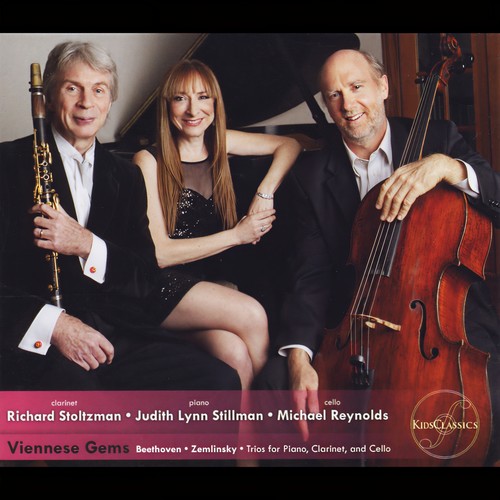
Viennese Gems
Trio for Piano, Clarinet and Cello in E-flat Major, Op. 38 (after the Septet, Op. 20) (1802-1803) Ludwig van Beethoven (1770-1827)
While it is not necessary to know Beethoven’s arrangement of his Septet in E-flat Major, Op. 20 (1799-1800) to
appreciate this Trio, it does offer some valuable insight. Although written during a period of personal anguish for Beethoven because of his hearing loss, the work is cheerful and optimistic. It reflects the 18th-century style galant (decorative, elegant style) of Haydn and Mozart. The Septet follows the Classical divertimento form (literally: amusement; it is a suite, light in character) with its many short, tuneful movements. The first movement has a slow introduction, followed by a section in traditional sonata form. The Adagio is adorned with lyrical melodies. Beethoven freely varies and develops the thematic material. The third movement is an effervescent minuet followed by a humorous trio. ...
While it is not necessary to know Beethoven’s arrangement of his Septet in E-flat Major, Op. 20 (1799-1800) to
appreciate this Trio, it does offer some valuable insight. Although written during a period of personal anguish for Beethoven because of his hearing loss, the work is cheerful and optimistic. It reflects the 18th-century style galant (decorative, elegant style) of Haydn and Mozart. The Septet follows the Classical divertimento form (literally: amusement; it is a suite, light in character) with its many short, tuneful movements. The first movement has a slow introduction, followed by a section in traditional sonata form. The Adagio is adorned with lyrical melodies. Beethoven freely varies and develops the thematic material. The third movement is an effervescent minuet followed by a humorous trio. ...




